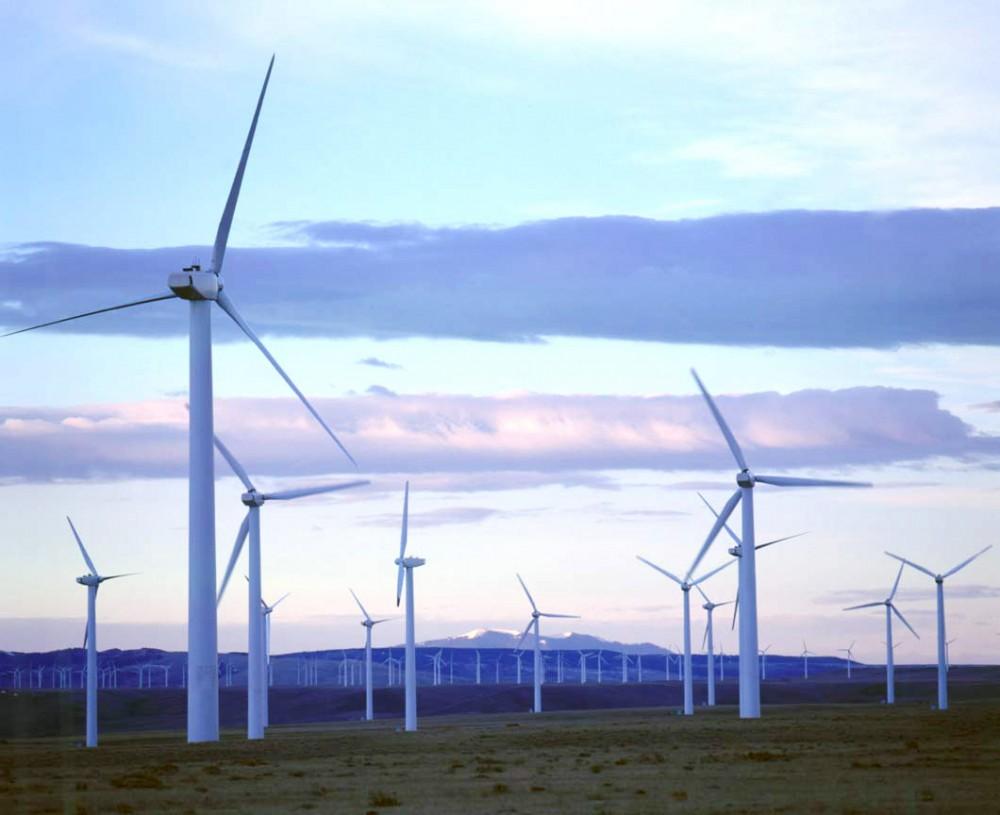GVSU addresses concerns with wind-powered energy

Courtesy Photo / ecoinstitution.com Wind turbines are most prominent in areas where there are large spanses of open space
Sep 23, 2010
With the growing national emphasis on alternative energy sources, wind energy has become a popular source for sustainable energy in West Michigan. As the number of wind farms increase, people have become concerned with the possible health effects. The West Michigan Wind Assessment project team at Grand Valley State University issued a report that addresses concerns about flicker, noise and air quality.
“Every energy source has some kind of impact on human health, some more than others,” said Erik Nordman, principal investigator of the project and assistant professor of biology at GVSU. “Citizens and communities need information about the relative health impacts of wind, coal and other energy sources so they can make informed choices about their energy futures.”
The Wind Assessment project team, which began in July 2009, focuses on two main health challenges in the report: flicker and noise.
“Wind turbines can create a flickering shadow on a building when the sun is low in the sky and just behind a rotating turbine,” Nordman said. “This can be a concern for people who suffer from a rare condition called photosensitive epilepsy and experience seizures in response to certain environmental triggers.”
Nordman explained that flicker can easily be addressed in a variety of ways that include landscaping to block the shadows or stopping the turbines during sensitive times.
West Michigan residents are also concerned about the noise of wind turbines.
“Studies show a single, modern, utility-scale wind turbine produces sounds at about the same loudness as a normal conversation, at a distance of 100 feet from the turbine,” Nordman said. “Most scientific reviews conclude that infrasound at the levels produced by wind turbines does not pose any direct human health risk. It is a topic of ongoing scientific investigation.”
In addition, modern turbines are much quieter than older models. Turbine noise manages through setback distances and can be mitigated by limiting operation of the turbine.
Nordman added that the National Research Council has so far concluded that noise from wind turbines at a distance of 0.5 miles or more is generally not a threat to human health. However, Nordman stressed that the effects of wind power on human health are not totally negative.
“The third connection to human health is through air quality,” he said. “Coal-fired electricity generation creates pollution, including sulfur dioxide. Decades of medical research has shown that sulfur dioxide leads to premature deaths and a host of illnesses. Wind energy can improve human health when it substitutes for coal-fired electricity generation.”
In a press release, Nordman said studies suggest if 10 percent of West Michigan’s electricity production was replaced with non-polluting sources such as wind, 29 premature deaths, 270 cases of serious illness and more than 15,000 cases of minor illness could be avoided each year.
“Every energy source has some kind of impact,” he said. “The benefits [of replacing other energy sources with wind power] accrue to the state and region. The negative aspects include landscape aesthetic impacts and in some cases noise. The negative aspects are borne by the local population. Successful wind projects will reduce the costs to local communities while preserving the benefits to the larger population.”

























